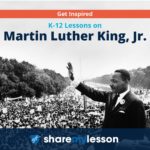Education was integral to Dr. King’s vision for a more just society, and working to ensure that dream comes true is integral to America’s educators today. Share the influential ideas of this towering figure of the civil rights movement who envisioned racial, economic and social justice for America by espousing non-violent, collective action that would change society forever. Share My Lesson’s updated collection features curated lesson plans, resources and activities to help your prek-12 students explore Dr. King’s commitment to the labor movement and the fight for justice and dignity.
1968: The Poor People’s Campaign
1968 was a tumultuous period in the United States. The Vietnam War, political assassinations and civil rights issues were among some of the challenges the country faced as solutions were sought. At this time, Martin Luther King Jr. organized the Poor People’s Campaign to shift the focus of the civil rights movement to economic issues; however, Reverend King was assassinated weeks before the campaign got underway in Washington, D.C. In this lesson, students will learn about the circumstances that gave rise to this campaign and how it is relevant today.
Martin Luther King, Jr., and the Power of Nonviolence
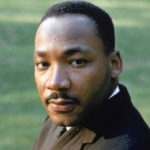
This lesson introduces students to Martin Luther King, Jr.’s philosophy of nonviolence and the teachings of Mohandas K. Gandhi that influenced King’s views. After considering the political impact of this philosophy, students explore its relevance to personal life. (Duration: 2 class periods)
Learning Objectives:
To examine the philosophy of nonviolence developed by Martin Luther King, Jr.
To consider how this philosophy translated into practice during the Civil Rights Movement.
To explore the relationship between King’s teachings on nonviolence and those of Mohandas K. Gandhi.
To reflect on the relevance of nonviolence to one’s personal conduct in everyday life.
I Have a Dream: Celebrating the Vision of Martin Luther King, Jr.
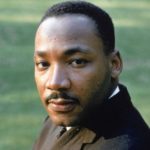
EDSITEment feature highlighting resources, activities, and lesson plans to help teachers, students, parents, and caregivers understand the impact Dr. King had — and continues to have — upon our country and the global efforts towards peace and civil rights.
On the third Monday of January, Americans celebrate the life and achievement of one of our most respected citizens — Martin Luther King, Jr. Dr. King was a leading force in the drive for civil rights in the United States, and he showed through words and actions that non-violent, persistent activism can achieve tremendous results by appealing to the moral conscience of Americans.
Martin Luther King Jr. and the Power of Words
In this lesson students have the opportunity to discuss how words have the power to bring about political, social, or economic change in society. By reviewing quotations from various leaders, activists, and others, students can begin to understand how ideas have an impact on the hearts and minds of people and can be a catalyst for change. Finally, students will reflect on the words of Martin Luther King Jr. and determine their relevance to the political, social, and economic issues of today.
Dr. King’s Dream
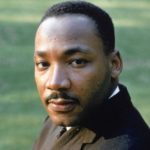
In this lesson, students will learn about the life and work of civil rights leader Martin Luther King, Jr. Students will listen to a brief biography, view photographs of the March on Washington, hear a portion of King’s “I Have a Dream” speech, and discuss what King’s words mean to them. Finally, they will create picture books about their own dreams of freedom for Americans today. (Duration: 3 class periods)
Competing Voices of the Civil Rights Movement
When most people think of the Civil Rights Movement in America, they think of Martin Luther King, Jr. delivering his “I Have a Dream” speech on the steps of the Lincoln Memorial in 1963 and receiving the Nobel Peace Prize the following year. But “the Movement” achieved its greatest results — the 1964 Civil Rights Act and the 1965 Voting Rights Act — due to the competing strategies and agendas of diverse individuals. Even black Americans, the primary beneficiaries of this landmark legislation, did not agree on the tactics that should be used to secure the equal protection of their rights. This unit presents the views of several important black leaders who shaped the debate over how to achieve freedom and equality in a nation that had long denied a portion of the American citizenry the full protection of their rights.
Civil Rights Movement: Sit-Ins
By the 1960s, the Civil Rights movement was growing in the U.S. Leaders such as Martin Luther King Jr. employed non-violent methods of protesting. On February 1, 1960 students in Greenville, NC engaged in a new peaceful tactic, a sit-in. This launched a wave of sit-ins across the country. In this lesson, students will hear about the circumstances that unfolded that day and hits impact on the country.
March on Washington: Lesson Plans & Resources
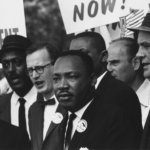
On August 28, 1963, approximately 250,000 people participated in the March on Washington for Jobs and Freedom, which is considered to be one of the largest peaceful political rallies for human rights in history. Among other events, the march participants gathered at the Lincoln Memorial to hear Martin Luther King Jr. deliver his iconic “I Have a Dream” speech. Many consider The Great March on Washington to be the event that encouraged the passage of the Civil Rights Act of 1964 and the Voting Rights Act of 1965. The Share My Lesson team has created this collection of free lessons and classroom materials to help middle and high school educators teach their students about this historic event.
Letter From Birmingham City Jail (Excerpts), Martin Luther King, Jr.

MLK was leading a demonstration in Birmingham, Alabama where it was forbidden to make demonstrations. This was the first time King had decided to break the law for he believed that the law was unjust. While incarcerated he wrote a letter in reply to a letter published about accusations made on him in the Birmingham Post Herald.
